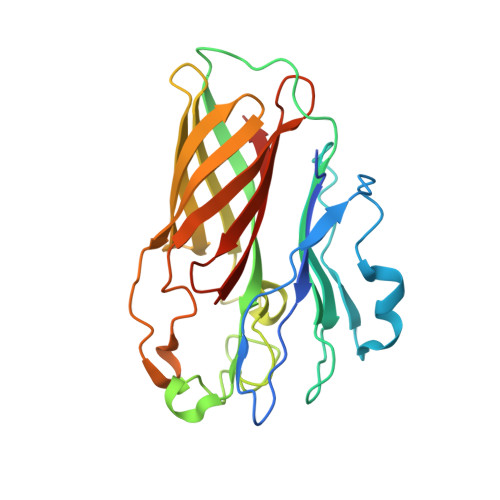Nonbinding site-directed mutants of transferrin binding protein B exhibit enhanced immunogenicity and protective capabilities.
Frandoloso, R., Martinez-Martinez, S., Calmettes, C., Fegan, J., Costa, E., Curran, D., Yu, R.H., Gutierrez-Martin, C.B., Rodriguez-Ferri, E.F., Moraes, T.F., Schryvers, A.B.(2015) Infect Immun 83: 1030-1038
- PubMed: 25547790
- DOI: https://doi.org/10.1128/IAI.02572-14
- Primary Citation of Related Structures:
4O3W, 4O3X, 4O3Y, 4O3Z, 4O49, 4O4U, 4O4X - PubMed Abstract:
Host-adapted Gram-negative bacterial pathogens from the Pasteurellaceae, Neisseriaceae, and Moraxellaceae families normally reside in the upper respiratory or genitourinary tracts of their hosts and rely on utilizing iron from host transferrin (Tf) for growth and survival. The surface receptor proteins that mediate this critical iron acquisition pathway have been proposed as ideal vaccine targets due to the critical role that they play in survival and disease pathogenesis in vivo. In particular, the surface lipoprotein component of the receptor, Tf binding protein B (TbpB), had received considerable attention as a potential antigen for vaccines in humans and food production animals but this has not translated into the series of successful vaccine products originally envisioned. Preliminary immunization experiments suggesting that host Tf could interfere with development of the immune response prompted us to directly address this question with site-directed mutant proteins defective in binding Tf. Site-directed mutants with dramatically reduced binding of porcine transferrin and nearly identical structure to the native proteins were prepared. A mutant Haemophilus parasuis TbpB was shown to induce an enhanced B-cell and T-cell response in pigs relative to native TbpB and provide superior protection from infection than the native TbpB or a commercial vaccine product. The results indicate that binding of host transferrin modulates the development of the immune response against TbpBs and that strategies designed to reduce or eliminate binding can be used to generate superior antigens for vaccines.
Organizational Affiliation:
Laboratory of Immunology, Faculty of Agronomy and Veterinary Medicine, University of Passo Fundo, São José, Passo Fundo, Brazil Department of Animal Health, University of León, León, Spain.














